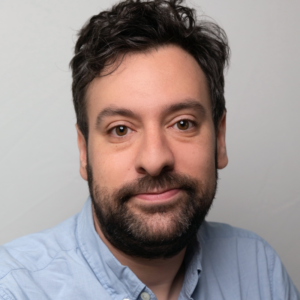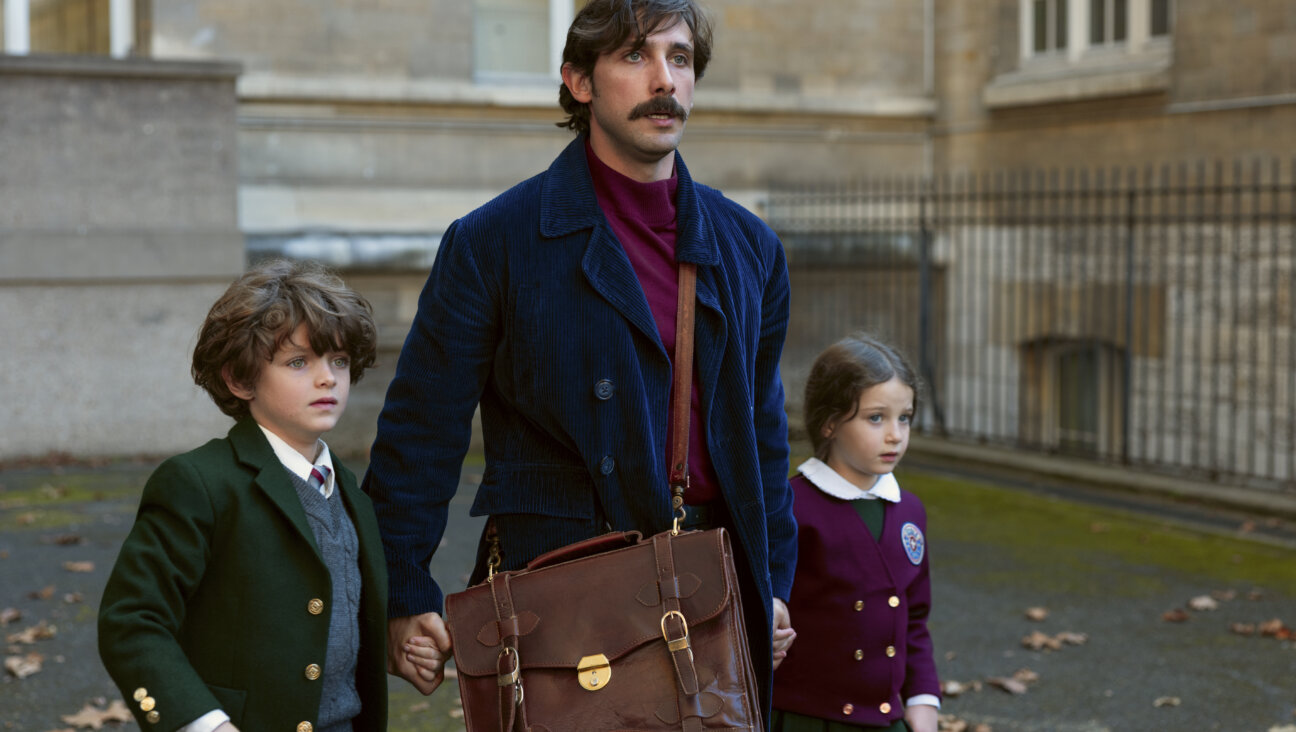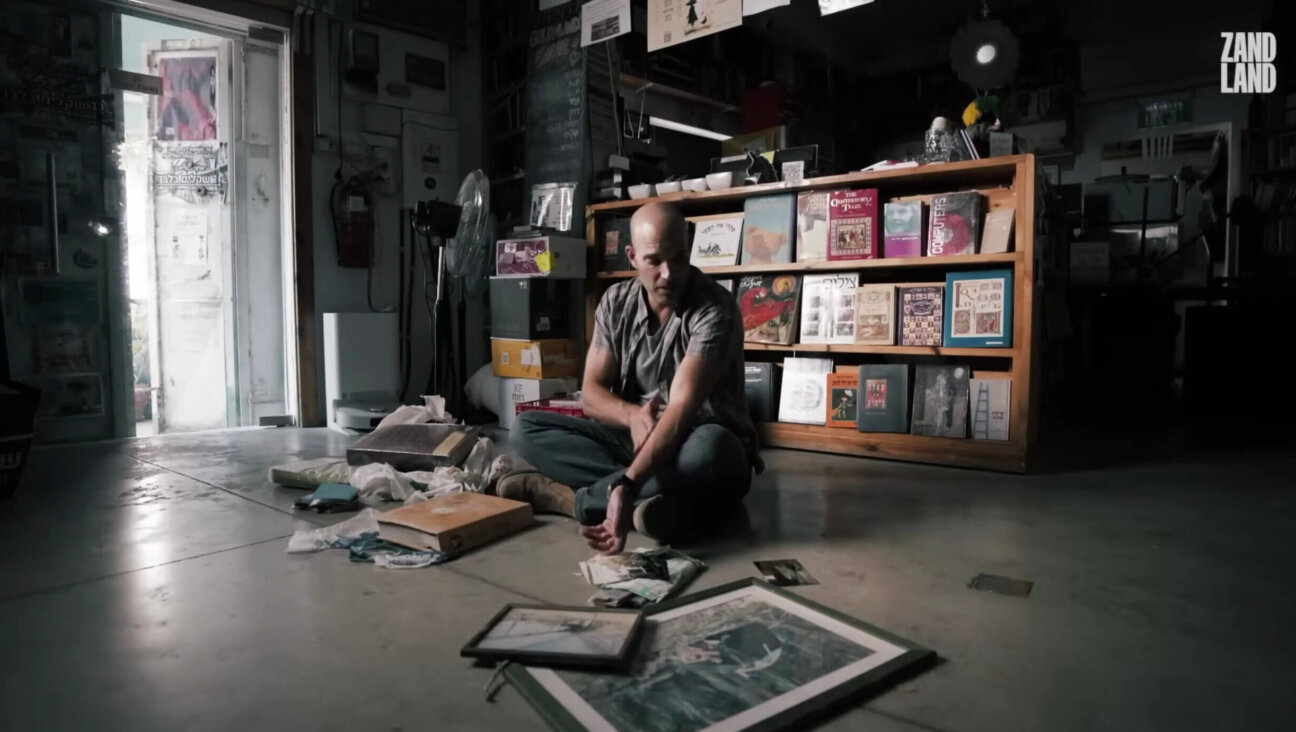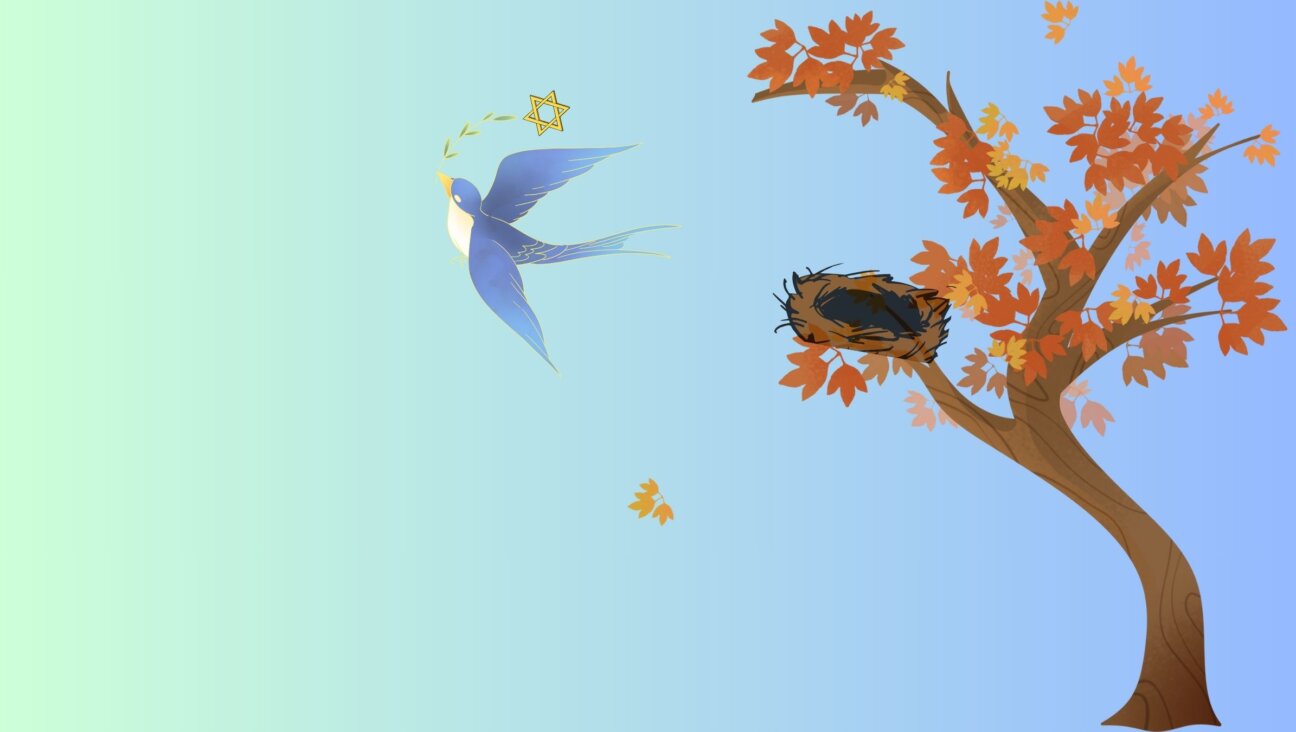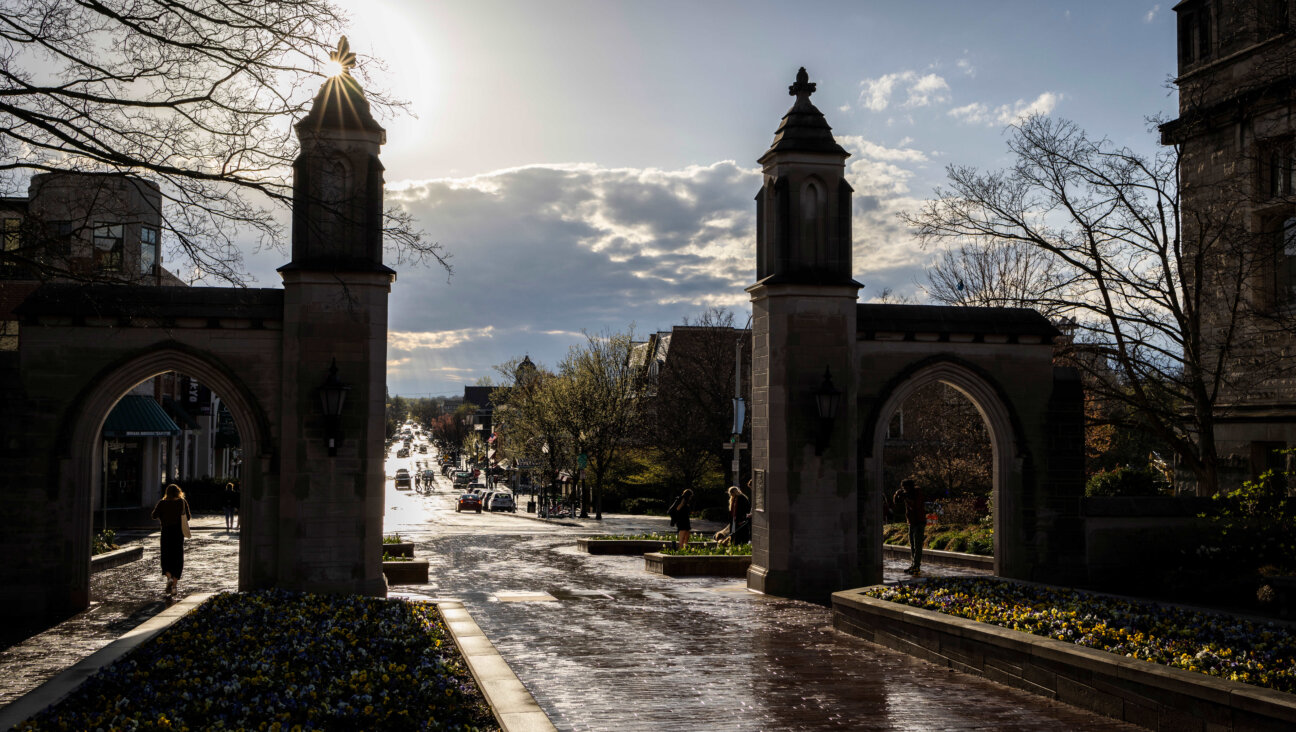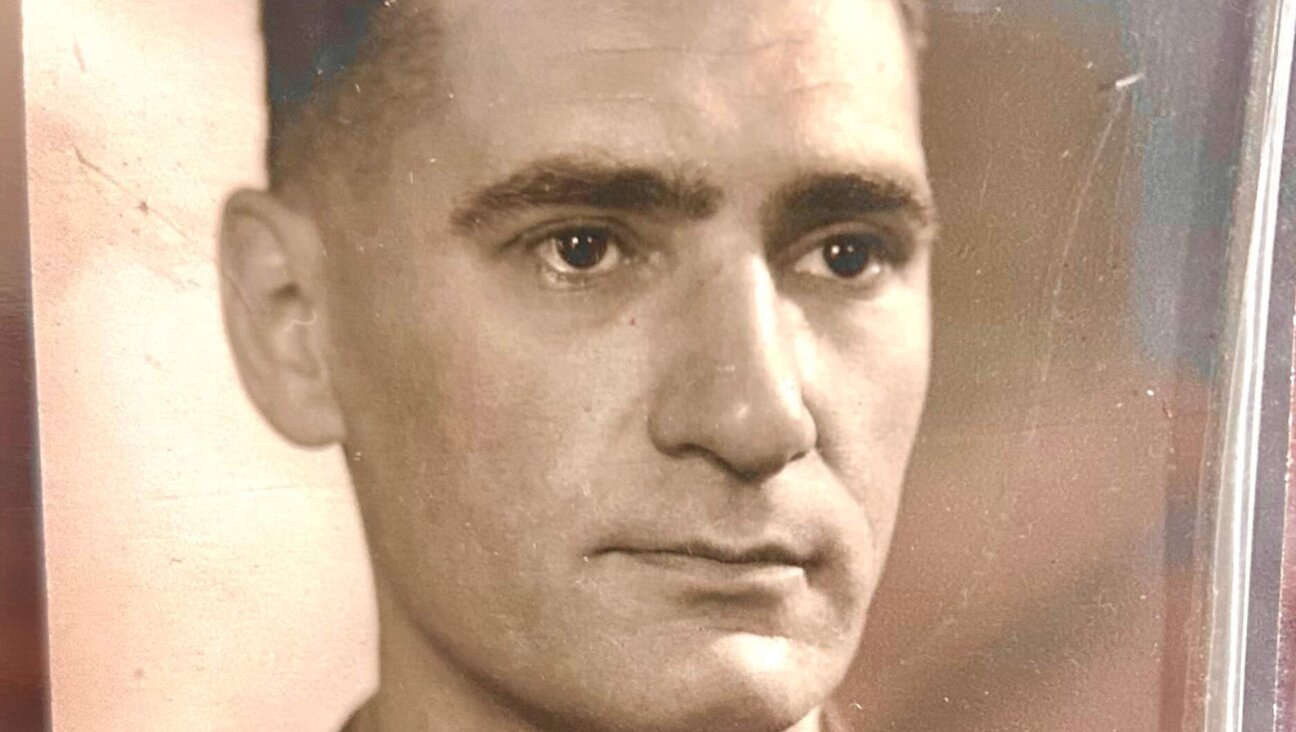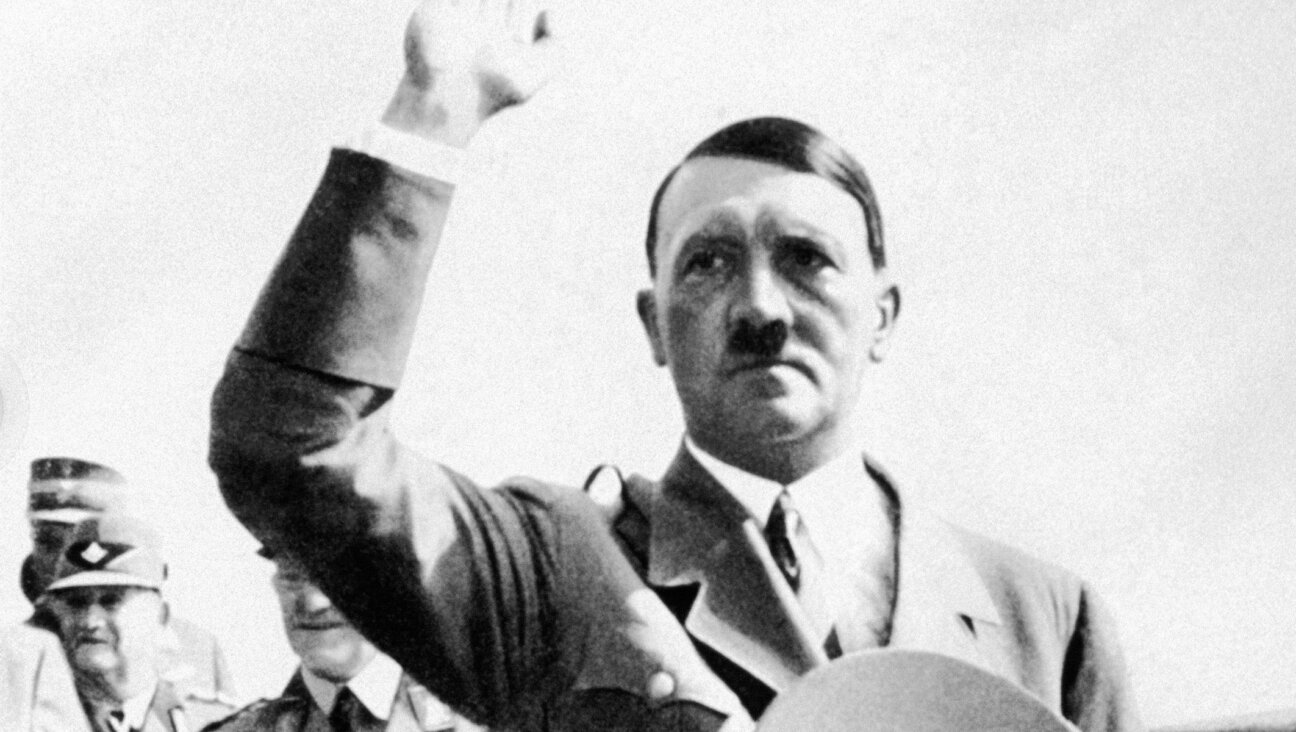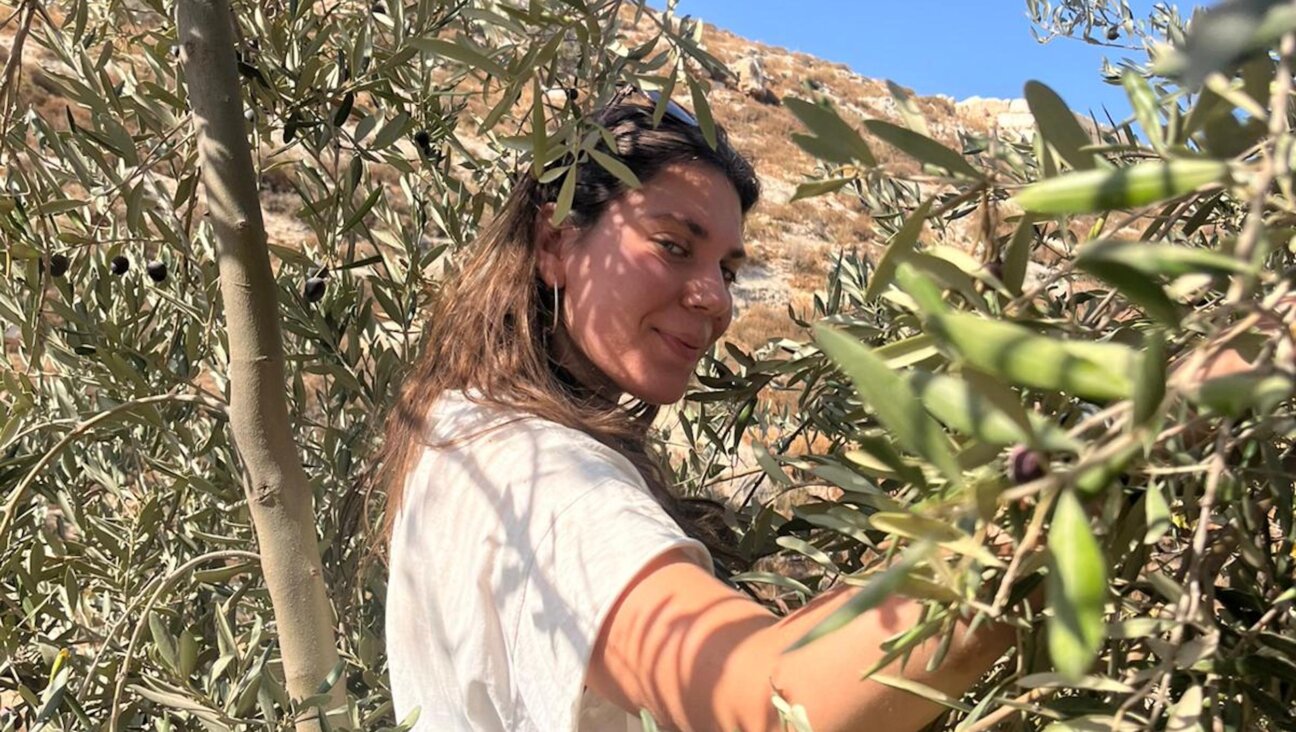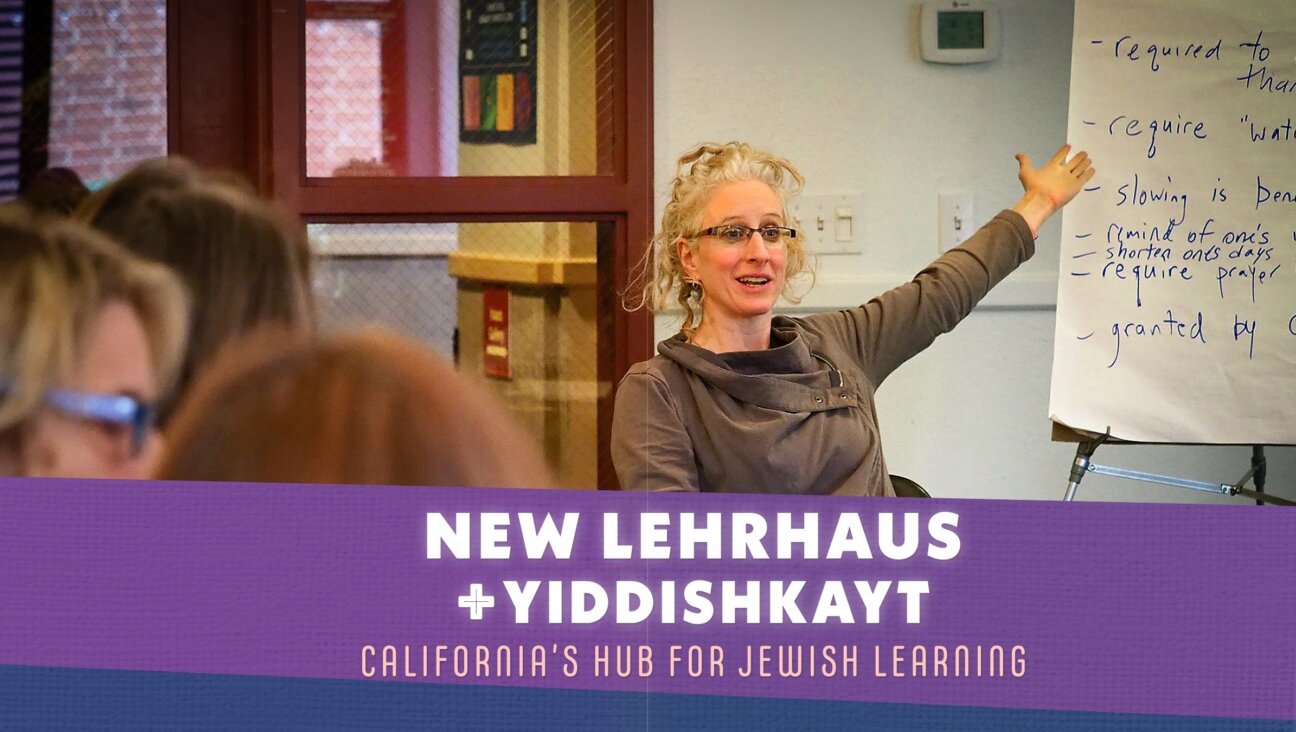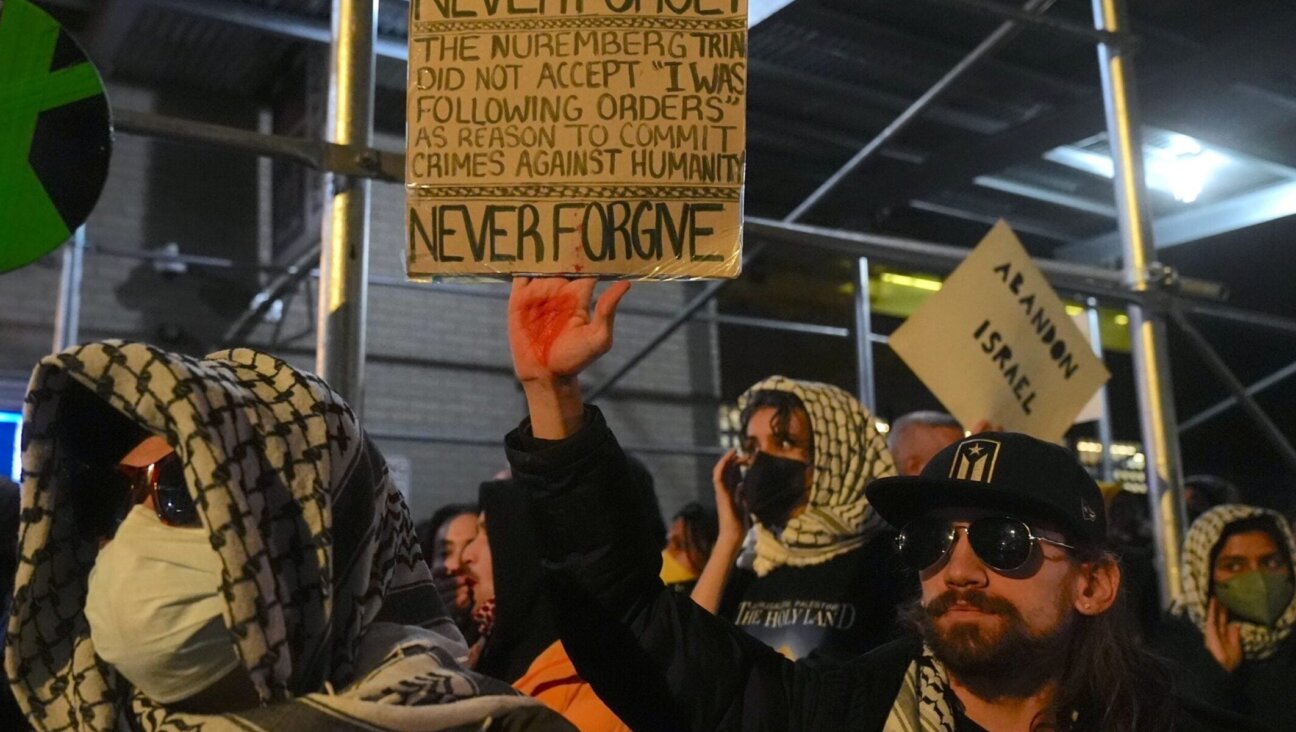An up-close look at the real Theodor Herzl — and the real meaning of Zionism
At Temple Emanu-El, rare artifacts, including report cards, portraits and journals, explore the leader’s life and legacy
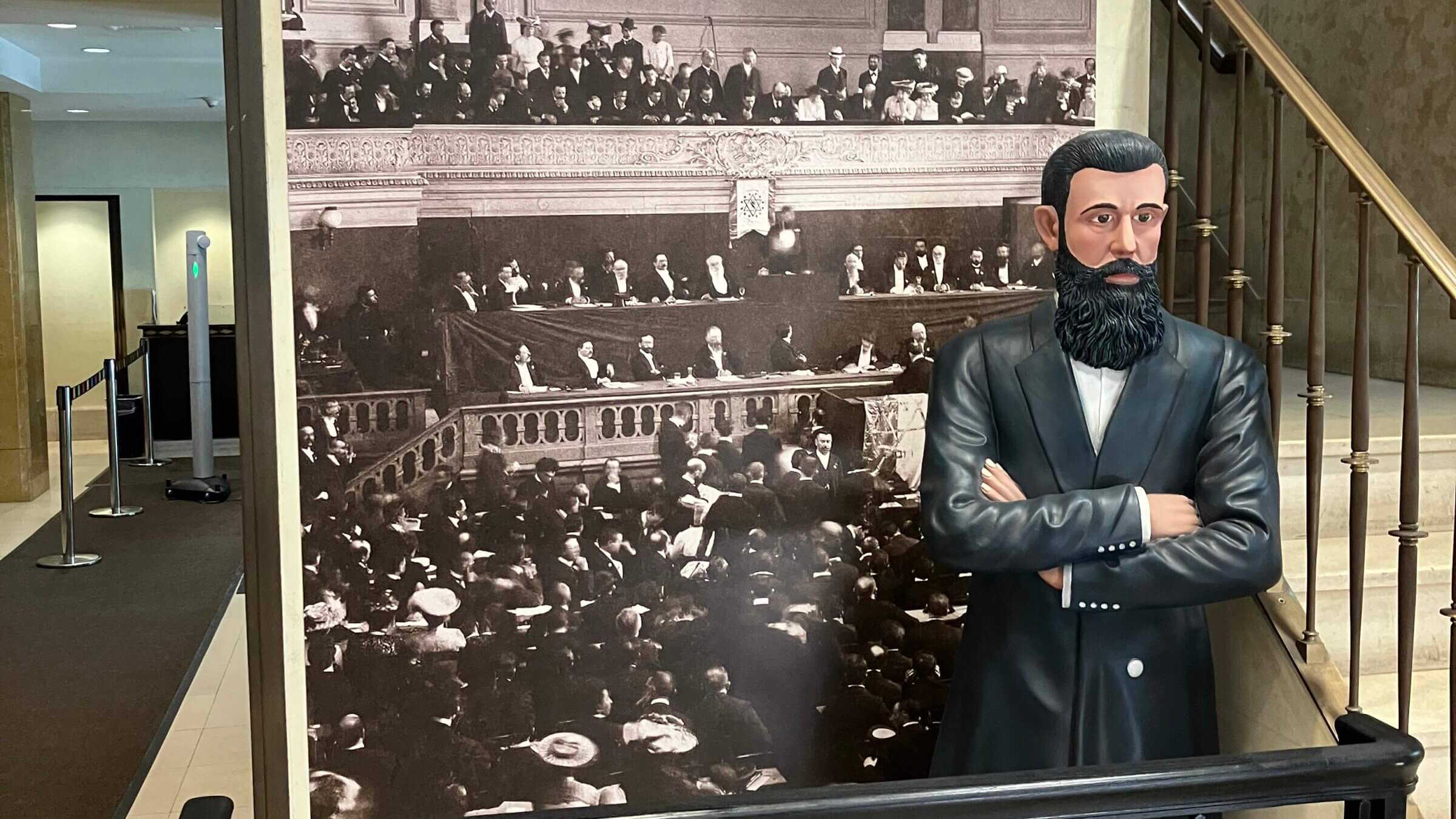
Visitors to All About Herzl have the chance to pose with him. Photo by PJ Grisar
Before Theodor Herzl was a modern Moses, he was a second grade student who brought home a report card from his school in Pest.
“Moms keep things,” said Warren Klein, the curator of the new exhibit, All About Herzl, now running at the Bernard Museum at New York’s Temple Emanu-El.
A facsimile of the report card (it stops just short of “a pleasure to have in class”), along with over 250 artifacts, show the arc of Herzl’s life and legacy.
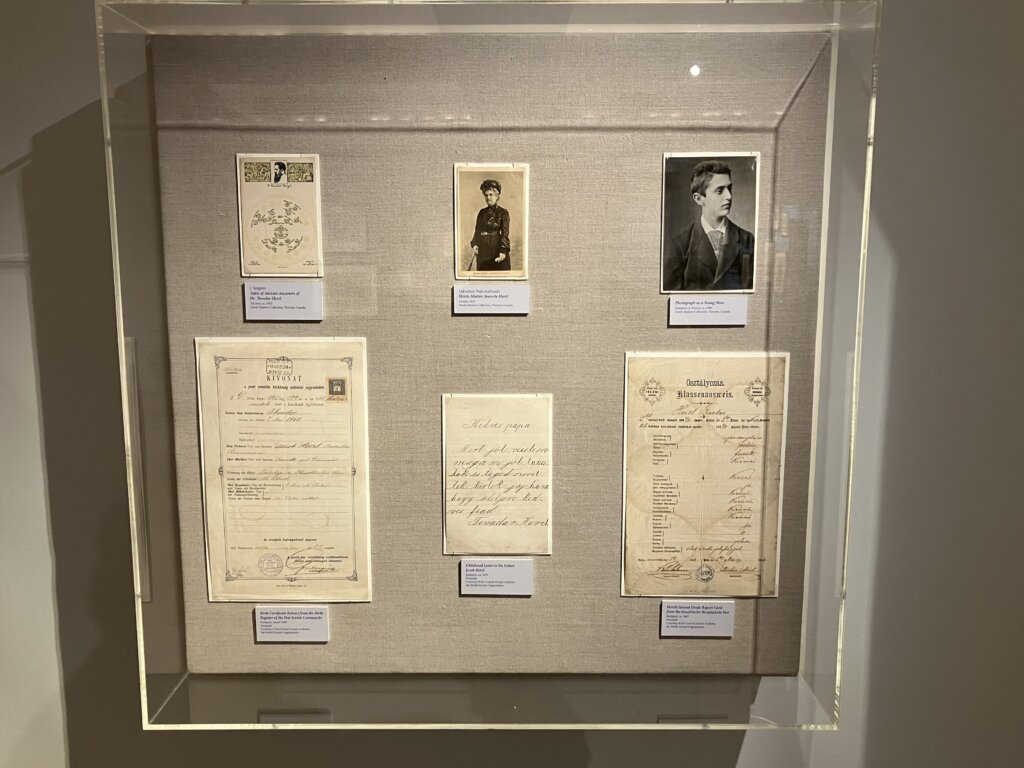
A journal, written when he was 22, refers to Eugen Dühring’s pamphlet The Jewish Question, calling for the expulsion of Jews from Europe, as a work “written out of cruel envy with the poisonous pen of personal vengefulness.” An 1896 letter to author Israel Zangwill welcomes him to Vienna “the capital of anti-Semitism.”
Writings from the time of the Dreyfus Affair, which ignited Herzl’s passion for Jewish self-determination, help explain how this thoroughly assimilated journalist and middling playwright began a movement that, a few decades after his early death, birthed the Jewish State.
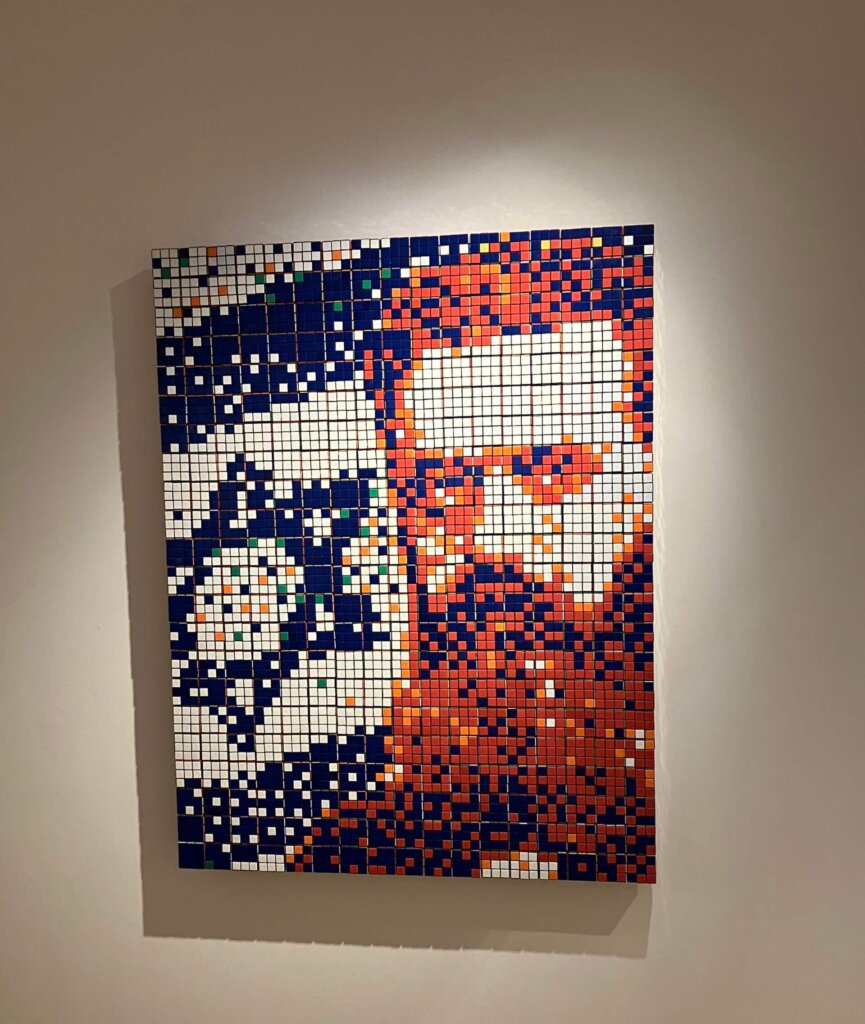
The exhibit is drawn primarily from the private collection of David Matlow, a 65-year-old corporate and securities lawyer from Toronto who has had a lifelong fascination with Herzl.
Among his never-before-displayed items are a Hebrew invitation to the first Zionist Congress in 1897 and a journal, owned by the cousin of author Stefan Zweig, that recorded a tally of Zionist delegates’ commitment to go on a fact-finding mission to East Africa to assay its viability as a potential site for a Jewish homeland. (They went in late 1904 and had mixed conclusions; the British withdrew their offer for the land the following year.)
Then, of course, there are the portraits, countless likenesses of Herzl, with his long “Assyrian beard,” drawn from life or from the iconic photograph of him leaning over the balcony of the Three Kings Hotel in Basel. Visitors to the exhibit also have a chance to snag a selfie with a Herzl statue on a different balcony backed by an image of the Zionist Congress — a kind of Zionist step and repeat.
“He was a superstar,” said Matlow, noting how his image graced the homes of Jews the world over, including the house of his Belarussian-born grandparents, who moved to Ramat Gan after Israel’s founding in 1948.
”He made himself the symbol of that movement. And then when he tragically died at 44 years old, in order to keep the dream alive, the Zionist Organization, which he created, continued to use him as a symbol.”
So enduring is Herzl’s personal iconography, that the illustrations of E.M. Lilien imagining him as biblical characters exist side-by-side in the gallery with a Rubik’s Cube mosaic of his face.
Given the centrality of Herzl to Zionism, Matlow said, he is somehow able to serve as a role model for both liberal, progressive Jews and those on the extreme right — in Israel, his image has been used by both supporters and critics of Israel’s judicial reform.
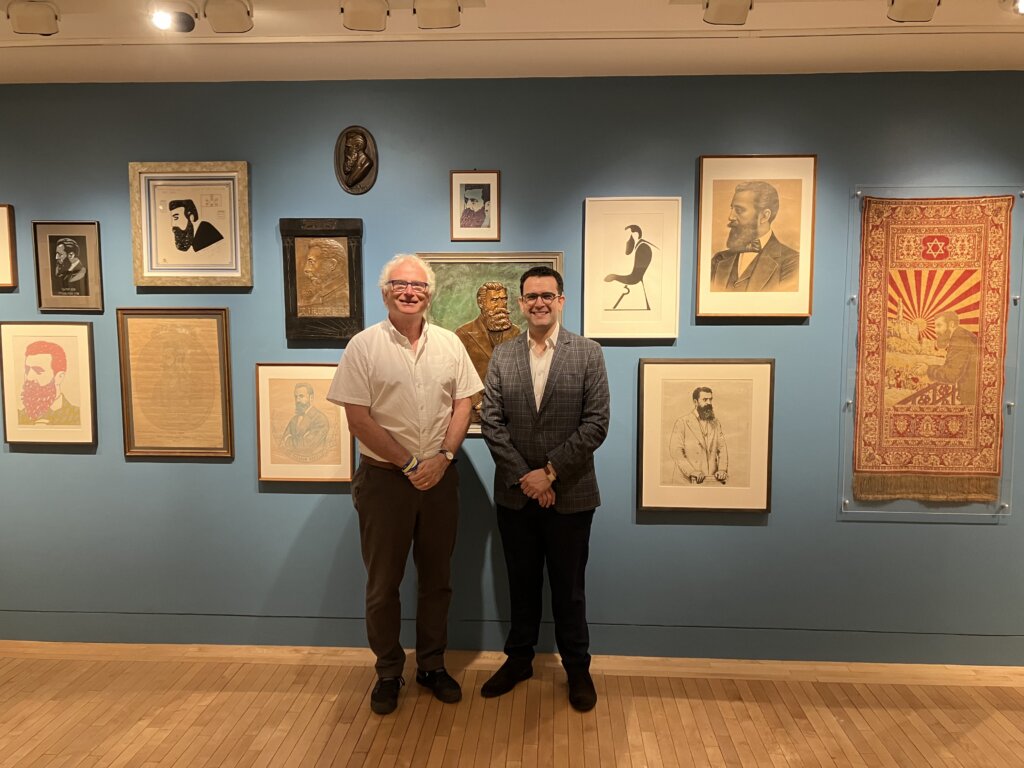
Part of the aim of the Bernard Museum exhibit, which includes several accompanying talks, is to dispel misconceptions about what Zionism means, a mission all the more urgent for Matlow since Oct. 7 of last year, when Israel’s detractors are increasingly defining Zionism in hostile terms.
“I believe that a reset is needed,” Matlow said. “What people are calling Zionism is something else. If innocent people are getting killed in Gaza, which they are, that’s not a function of Zionism, and that’s not performed by Zionists in the name of Zionism. Zionism is the right of the Jewish people to live freely and securely in their own homeland, and it doesn’t speak to doing anything negative or adverse to anyone else. It’s about us.”
Herzl’s vision, Matlow said, illustrated in correspondence throughout the gallery alongside selections from his writings, was one where Jews could actualize self-determination without harming another group.
“We welcome anyone to come to the exhibition who wants to learn about Herzl’s life, that wants to learn about Zionism, that, I think, especially in today’s day and age, is so misunderstood,” said Klein. “We hope to be an educational vessel for that.”
The exhibit All About Herzl runs through Jan. 23, 2025 at the Bernard Museum at Temple Emanu-El’s Streicker Center. More information can be found here.
